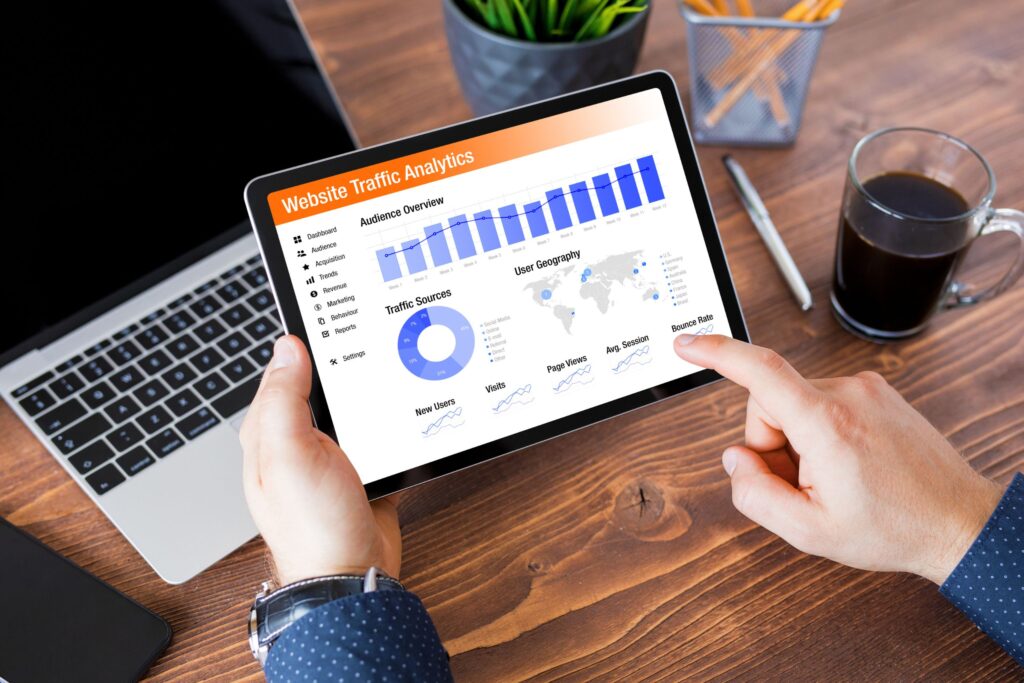Web analytics: how to analyze and optimize the performance of your WordPress sites
Web analytics is a key component of effectively managing your WordPress site. It provides you with important information about visitor behavior, content performance, and many other aspects of your site. In this article, we will look at how to analyze and optimize the performance of your WordPress sites using web analytics tools.

Choose an appropriate web analytics tool
To analyze your WordPress sites, the first step is to choose an appropriate web analytics tool. The most popular and widely used tool is Google Analytics, which provides a variety of data and statistics about your sites. There are other tools like Matomo (formerly Piwik) and Open Web Analytics, which are alternatives to Google Analytics.
Install and set up the analytics tool on your WordPress site
After choosing a web analytics tool, you need to install and set it up on your WordPress sites. You can use plugins like Google Analytics for WordPress by MonsterInsights or Google Analytics Dashboard for WP by ExactMetrics, which allow you to integrate Google Analytics on your WordPress site easily and without having to edit your themes code.

Understand key metrics and dimensions
To analyze the performance of your WordPress sites, you need to understand the basic metrics and dimensions that web analytics tools provide. Some of the key metrics to track include:
- Unique users: the number of individual users who visit your site;
- Number of sessions: how many times users visit your site;
- Duration of the session: how much time users spend on your pages;
- Number of pages viewed: the total number of views of all pages;
- Exit page: the last page the user visited before leaving the site;
- Dropout rate: the percentage of visitors who leave the site after only one page view;
- Traffic sources: where visitors to your site come from (for example, directly, through search engines, social media, referrals from other sites, etc.).

Analyze visitor behavior
Once you understand the key metrics, the next step is to analyze visitor behavior. Web analytics provide you with information about which pages are most visited, what content attracts the most attention, and what are the weak points of your site. This allows you to optimize your site's content, architecture and navigation to improve user experience and visitor retention.
Measure the effectiveness of marketing campaigns
Web analytics allow you to track the effectiveness of your marketing campaigns using URL tagging (UTM parameters) and measure conversions. This way, you can determine which marketing efforts drive the best results and adjust your strategy to increase your ROI (return on investment).

Optimize page load speed
One of the key aspects of web analytics is optimizing page load speed. This can contribute to a better user experience and a higher search engine ranking. You can use tools like Google PageSpeed Insights or GTmetrix, to analyze and improve the load times of your WordPress sites. Such tools provide you with optimization tips such as image compression, page caching, and code minification.
Explore the conversion path of your users
Understanding the conversion path of your users is essential to improving the performance of your WordPress sites. Web analytics allow you to analyze the steps users take before converting (for example, purchasing a product, signing up for a newsletter, or filling out a contact form). Analyzing this data can help you identify issues or opportunities for improvement on your sites to increase conversion rates.

Monitor and adapt to changes in consumer behavior
Web analytics is a process that requires constant monitoring and analysis of data. User behavior and trends in the Internet world are constantly changing, and the analysis of your sites must adapt to these changes. This means you need to look at the data and make adjustments to your strategy to ensure that your sites continue to be effective and meet the needs of your users. Regular tracking of metrics and dimensions, as well as competitor analysis and the latest industry trends, will help you maintain high performance on your WordPress sites.
Web analytics is a critical tool for evaluating and improving the performance of your WordPress sites. Using the right tools and metrics, you can analyze visitor behavior, monitor the effectiveness of your marketing campaigns, improve page loading speed and optimize the conversion path. It is important to monitor and adapt to changes in user behavior to keep your sites performance high.







